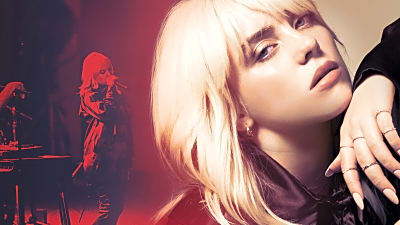- Home
- Quizzes
- My Quiz Activity
- Newsletters
- MY FAVORITES
- Add Sports/Teams
- SPORTS
-
NFL
- NFL Home
- Arizona Cardinals
- Atlanta Falcons
- Baltimore Ravens
- Buffalo Bills
- Carolina Panthers
- Chicago Bears
- Cincinnati Bengals
- Cleveland Browns
- Dallas Cowboys
- Denver Broncos
- Detroit Lions
- Green Bay Packers
- Houston Texans
- Indianapolis Colts
- Jacksonville Jaguars
- Kansas City Chiefs
- Las Vegas Raiders
- Los Angeles Chargers
- Los Angeles Rams
- Miami Dolphins
- Minnesota Vikings
- New England Patriots
- New Orleans Saints
- New York Jets
- New York Giants
- Philadelphia Eagles
- Pittsburgh Steelers
- San Francisco 49ers
- Seattle Seahawks
- Tampa Bay Buccaneers
- Tennessee Titans
- Washington Commanders
-
MLB
- MLB Home
- Athletics
- Arizona Diamondbacks
- Atlanta Braves
- Baltimore Orioles
- Boston Red Sox
- Chicago White Sox
- Chicago Cubs
- Cincinnati Reds
- Cleveland Guardians
- Colorado Rockies
- Detroit Tigers
- Houston Astros
- Kansas City Royals
- Los Angeles Angels
- Los Angeles Dodgers
- Miami Marlins
- Milwaukee Brewers
- Minnesota Twins
- New York Yankees
- New York Mets
- Philadelphia Phillies
- Pittsburgh Pirates
- San Diego Padres
- San Francisco Giants
- Seattle Mariners
- St. Louis Cardinals
- Tampa Bay Rays
- Texas Rangers
- Toronto Blue Jays
- Washington Nationals
-
NBA
- NBA Home
- Atlanta Hawks
- Boston Celtics
- Brooklyn Nets
- Charlotte Hornets
- Chicago Bulls
- Cleveland Cavaliers
- Dallas Mavericks
- Denver Nuggets
- Detroit Pistons
- Golden State Warriors
- Houston Rockets
- Indiana Pacers
- Los Angeles Clippers
- Los Angeles Lakers
- Memphis Grizzlies
- Miami Heat
- Milwaukee Bucks
- Minnesota Timberwolves
- New Orleans Pelicans
- New York Knicks
- Oklahoma City Thunder
- Orlando Magic
- Philadelphia 76ers
- Phoenix Suns
- Portland Trail Blazers
- Sacramento Kings
- San Antonio Spurs
- Toronto Raptors
- Utah Jazz
- Washington Wizards
-
NHL
- NHL Home
- Anaheim Ducks
- Boston Bruins
- Buffalo Sabres
- Calgary Flames
- Carolina Hurricanes
- Chicago Blackhawks
- Colorado Avalanche
- Columbus Blue Jackets
- Dallas Stars
- Detroit Red Wings
- Edmonton Oilers
- Florida Panthers
- Los Angeles Kings
- Minnesota Wild
- Montreal Canadiens
- Nashville Predators
- New Jersey Devils
- New York Islanders
- New York Rangers
- Ottawa Senators
- Philadelphia Flyers
- Pittsburgh Penguins
- San Jose Sharks
- Seattle Kraken
- St. Louis Blues
- Tampa Bay Lightning
- Toronto Maple Leafs
- Utah Mammoth
- Vancouver Canucks
- Vegas Golden Knights
- Washington Capitals
- Winnipeg Jets
- NCAAF
- NCAAM
- Olympics
- Boxing
- Entertainment
- Lifestyle
- Golf
- MMA
- Soccer
- Tennis
- Wrestling
- Sports Betting
- More Sports
- RESOURCES
- My Account
- YB on Facebook
- YB on Twitter
- YB on Flipboard
- Contact Us
- Privacy Policy
- Terms of Service
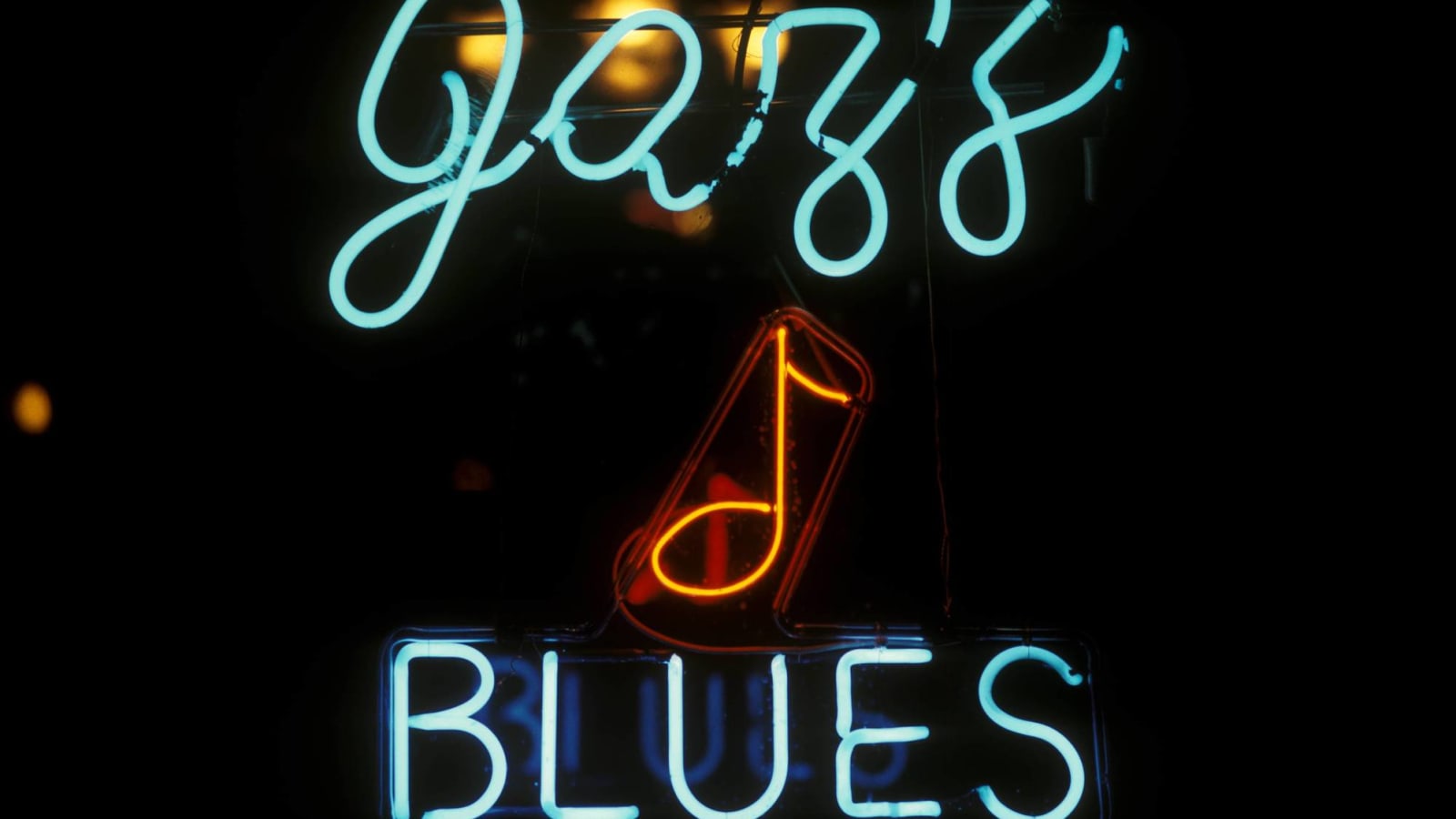
How musical genres got their names
When it comes to certain genres of music, some names are pretty self-explanatory: you can picture what"drum and bass" and "Cajun" might sound like pretty easily (and even if you're off, you're probably still in the right wheelhouse). However, names that we take for granted, like "metal" and "trap" music, take on abstract forms when you start thinking about them. So what are the etymological roots of some of our favorite genres? Get to clickin', 'cos we're about to find out.
Techno

At first, one might think that "techno" makes sense on paper: heavily electronic dance music would naturally be based on a shortened version of the word "technology." While its origins as a genre signifier can be traced to the mid-'80s (which makes sense, as people were dropping full-band arrangements to start making music with increasingly-advanced new digital devices), let's not forget that the Greeks used the word "téchnē" to mean artful and skillful, which added on another layer. Similarly, other subgenres like "trance" tend to focus on the feeling of release that comes from a high-BPM set, soon leading to euphoria.
Country

When you think about it, "country" is an odd term for "country music," as it seemingly embodies an entire nation-state in the description of its sound. Yet, the journey of "country music" is a long one, starting with what people referred to as "hillbilly music" back in the 1920s. Initially, a loose signifier to describe both Southern gospel and American folk stylings, the actual term "country music" (sometimes perhaps more accurately defined as "Country-Western Music") didn't take off until the 1940s when radio programs like the "Grand Ole Opry" delivered string bands and songwriters directly into the homes of many American families and thus cementing "country" as a distinctly localized genre of music.
Reggae
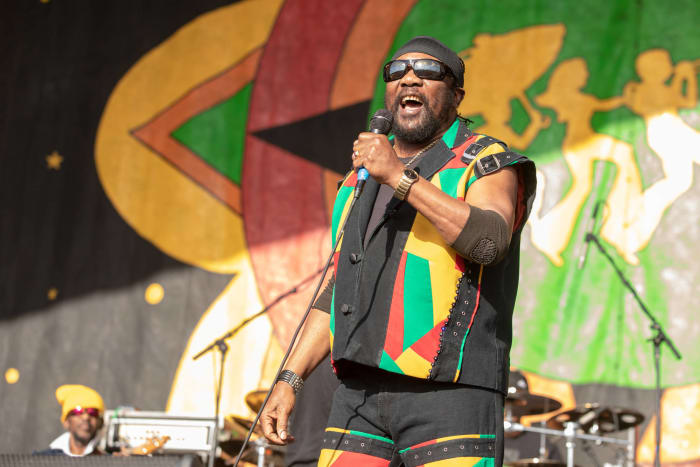
When it comes to popularizing the phrase "reggae," the origins are surprisingly easy to trace. The phrase was first pushed into the public consciousness in 1968 by The Maytals, of which frontman "Toots" Hibbert wrote a song called "Do the Reggay". With a casual rocksteady sway, the song helped define a movement that was already heavily in the works since the 1960s, specifically how Jamaican musicians were blending ska, rock, and Calypso music. "Toots" described his version of "reggay" as being about a scruffy or somewhat unkempt individual (and there have been earlier slang variants like "rege," "strege," and "rege-rege"), but as a genre, "reggae" has gone to symbolize a beautiful, peaceful, and at times downright spiritual style of groove.
Yacht Rock
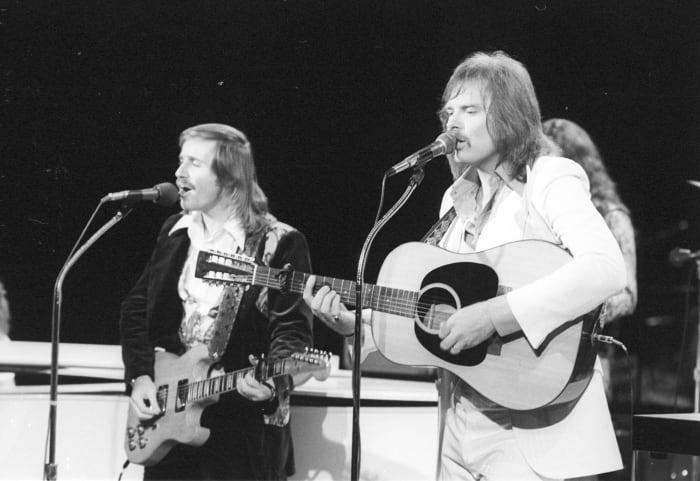
While "yacht rock" has existed since the mid-'70s, it didn't get its formal name until a web series in 2005 decided to lovingly mock a certain type of high-brand soft rock from the era. Often associated with breezy, jazzy, and glossy tunes, acts lumped into this modern term include Steely Dan, Hall & Oates, and Christopher Cross. While the term is now fairly ubiquitous and this subgenre is now idolized in certain indie-pop circles, to this day, some purists frequently debate if certain artists are "on the boat" or not. For the record, England Dan & J.F. Coley are absolutely on the boat.
Shoegaze
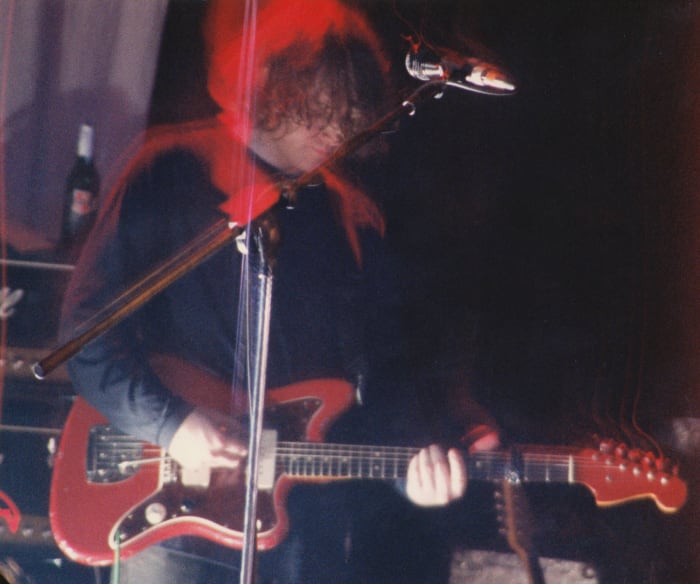
The rock scene in the U.K. in the late '80s was a fascinating one, as the titanic success of goth-rock acts like The Cure head led to a litany of noisy and distinct subgenres to gain attention from neo-psychedelia to the danceable form that was Madchester. Yet "shoegaze" was first written about in the now-defunct U.K. weekly "Sounds," wherein they used the descriptor for a band called Moose, noting that the group achieved their trademark sound of swirling guitars by staring at their effects pedals and not making eye contact with the audience. Soon picked up by other publications, "shoegaze" soon caught on and became popularized by bands like the Jesus and Mary Chain and, most prominently, My Bloody Valentine. Their 1991 record "Loveless" is considered one of the greatest rock albums ever made and is a genre benchmark.
Jungle

While '90s dance trends like techno and trance paved the way for the obnoxious stadium EDM we hear today, one of the most thrilling parts of early '90s dance music was how utterly defragmented it was. Subgenres like Big Beat and hardcore broke out, but out of all of that came the distinct sounds of "jungle techno." Birthed out of a love for dancehall, "jungle" was defined by incorporating reggae-like basslines into what are otherwise crashing dance tracks. "We Are I.E." by Lennie De-Ice from 1991 is often cited as one of the fundamental sonic building blocks for the movement. By blending its worldbeat aesthetics with something as immediate and danceable as techno, jungle ultimately became an outlet for expression for many up-and-coming urban producers in the U.K. Celebrated for flipping what may be an otherwise racially-charged term into one of empowerment, jungle enjoyed popularity in the U.K. but never garnered as strong of a following in the U.S.
Brill Building
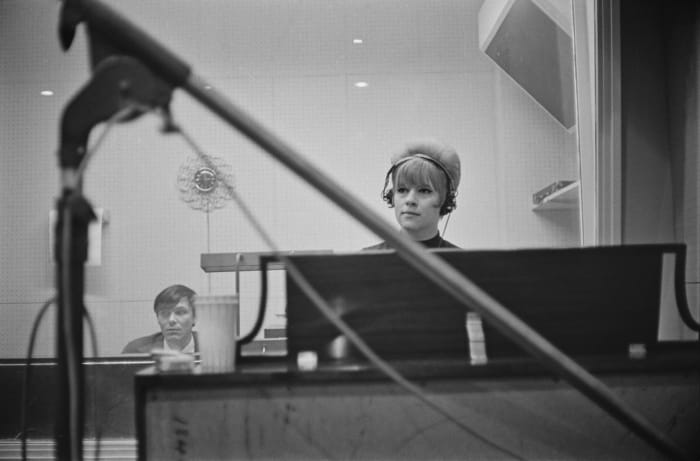
In the pre-rock era, teenybopper pop was all the rage, and novelty songs and quirky ear candy were all the rage (don't forget: The Chordettes recorded both "Mr. Sandman" and "Lollipop", turning them into a true powerhouse of the day). But as the '60s stared the era down, a certain caste of songwriters was looking for something a bit more sophisticated. Neil Sedaka turned his first few flop singles around by penning 1959's "Oh! Carol", about his ex-girlfriend Carole King. Every day, the two ran into each other in the Brill Building in New York City, where multiple labels and songwriting collectives worked on pounding out radio gold day after day. The sound became so prominent that "Brill Building" was a genre signifier into itself, and songwriters like Neil Diamond, Ellie Greenwich, Burt Bacharach, and Andy Kim were some of the big names that worked out of that tiny little building, changing the course of pop music in the process.
Industrial

Due to Nine Inch Nails' 1989 debut album "Pretty Hate Machine" becoming a somewhat immediate sensation, the general public started to clue into what "industrial music" was. While NIN frontman Trent Reznor does indeed use the sound of actual drills on his admittedly "industrial-pop" record, he was far from the first artist to dabble in the genre. While "industrial music" as a term was first used in the pre-rock era to describe a Shostakovich symphony, it was the hard synth pulsations of krautrock innovators Kraftwerk which laid the modern foundation for industrial music, to say nothing of the outre works of Pink Floyd, Miles Davis, Joy Division, and Captain Beefheart. Yet for many, the sometimes punishing sounds of Throbbing Gristle is where it all started, and its influence continues to this day.
Prog Rock

"Prog rock" is a bit of an unusual genre signifier, as pretty much everyone knows bands who play this style, but few could properly define its absolute tenants. An obvious shortening of "progressive rock," prog truly was defined by its sheer sense of ambition. Birthed out of art-rock dynamics and the studio experimentations of the '70s, prog rock can best be defined by its sense of scale: this is a genre of "epic" songs, often drenched in pure technical wizardry. Time signatures are encouraged to be changed, and if you can make the album you're making around a concept (or even make it an opera), top marks to you. Early prog champions include the likes Emerson, Lake & Palmer, Pink Floyd, and Yes. Nowadays, acts like Porcupine Tree and whatever iteration of The Mars Volta we're on carry prog's legacy forward.
Rhythm & Blues
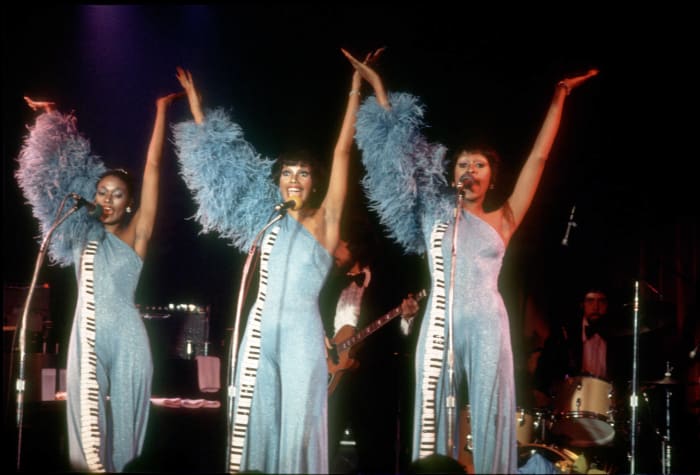
Birthed out of Black music traditions like boogie-woogie, gospel, and blues, it's somewhat mind-blowing to learn that the first time the phrase "rhythm and blues" was used in print was as late as 1948, showing up in Billboard Magazine. The phrase replaced the deeply troublesome term "race music," which was used prior, and even to this day, rhythm and blues are used as a catchall to categorize a large amount of music by Black performers. Even the Pointer Sisters' 1983 chart-busting electropop confection "Break Out", an album that contained crossover hits like "Automatic", "Neutron Dance", and "Jump (For My Love)" managed to scale both Billboard's pop charts and "R&B charts" at the same time. There are decades full of legendary R&B albums that are must-owns for any self-respecting music aficionado, and we love them despite R&B's somewhat unfortunate etymology.
Vaporwave
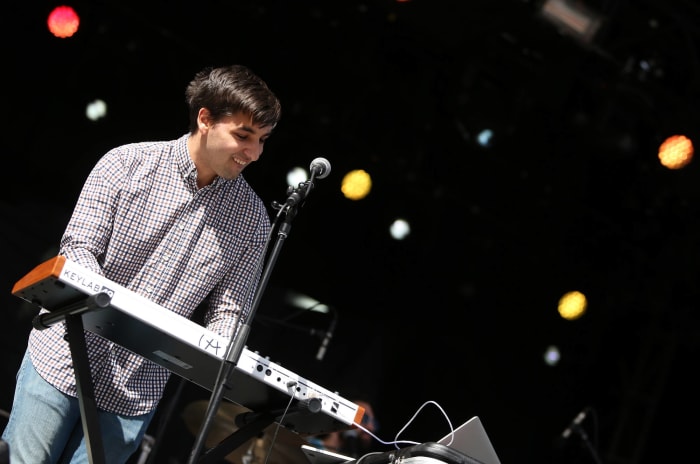
In the indie-pop revolution of the early 2000s, increasingly-affordable music production software got in the hands of an "always online" generation. As such, musical forms began evolving at a breakneck speed. "Chillwave" was a specific subgenre that featured icy synths over stylish grooves, pioneered by acts like Neon Indian. "Vaporwave" (a take on the computer industry's term for hyped products that fail to materialize: "vaporware") is both a musical style and a type of iconography, often satirizing corporate consumer culture. Often, acts would take cheesy customer-facing iconography (like smooth jazz or elevator muzak) and slow them down, chop them up, and repurpose them to a higher artistic plane -- while remaining imminently funky. There were even subgenres within this subgenre (it's easy to fall into the "Simpsonswave" hole), but some of the genre's most prominent members like George Clanton and Saint Pepsi/Skylar Spence are still putting out new music to this day.
Jazz

Amazingly, we aren't fully sure where the origin of the word "jazz" originates. We know it is a distinct Americanism that could be spotted around 1905-1910 but didn't appear in print to describe music until 1915. Its root stems from an old slang term in the mid-1800s called "jasm," which means for something to have energy or pep. Early 1910s articles alternated between calling the genre both "jazz" and "jass," with the former overtaking the popular discourse shortly thereafter. Jazz is all-encompassing, as jazz can refer to big band styles of dance music in the 1920s to the more complex, polyphonic form we think of today.
Funk

When you're in "a funk," you're often in a bad or dejected mood. When you're listening to funk music, it is usually 'cos you are gettin' down and shaking your groove thing. "Funk" has its genesis in being a slang term to describe something musty or smelly. In early African communities, having a "funk" had positive connotations, as the scent of sweat was associated with hard, diligent work. Songs featuring the word "funk" in the title could be traced back to as early as 1907, but the way we think of groovy, sexy, and danceable "funk" music now didn't fully coalesce until the 1960s when artists like James Brown brought it directly to the mainstream. "P-Funk" and other variants would take on lively new forms in the 1970s, and even today acts like Bruno Mars and Anderson .Paak wish nothing more than to pay tribute to their funk heroes, still topping the charts even all these decades later.
Rock & Roll
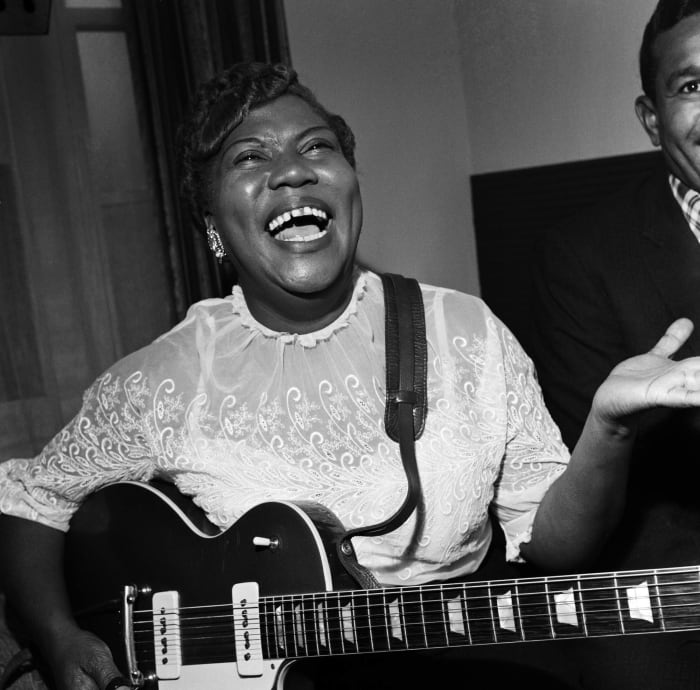
"Rock & roll" as a term is shortened from "rocking and rolling," which initially was used to describe turbulent waters for boats. Of course, the more lewd-minded may think of it as a euphemism for sex, which wouldn't be too far out of place for this often taboo-breaking genre. A more propulsive form of country, gospel, and blues, rock has had many variants and early champions, ranging from Sister Rosetta Tharpe to Chuck Berry to Elvis Presley. Even the phrase "rockabilly" joins together both "rock and roll" and "hillbilly" to get its distinct amped-up verbiage. It eventually became a very popular genre, but for the life of us, we can't think of a single rock band. Do you know any off the top of your head?
Alternative

Ben Gibbard of Death Cab for Cutie once cracked a joke about genre classification: they called it "college rock" in the '80s, "alternative" in the '90s, and "indie rock" in the 2000s. He's not wrong, as mainstream rock's artier cousin has gone through as many descriptors as it has evolutions. In short, "alternative" is just that: a variant of more mainstream fare that is often digestible but filled with higher-minded ambitions. Signed to an indie label, R.E.M. were some of the first "alternative superstars" to find crossover success despite their sometimes impenetrable lyrics and The Smashing Pumpkins' ever-indulgent flights of fancy helped define "alt-rock" for much of the '90s. While some argue that modern acts like Twenty One Pilots fit the "alternative" bill, the genre doesn't have many torchbearers in the 2020s.
Heavy Metal
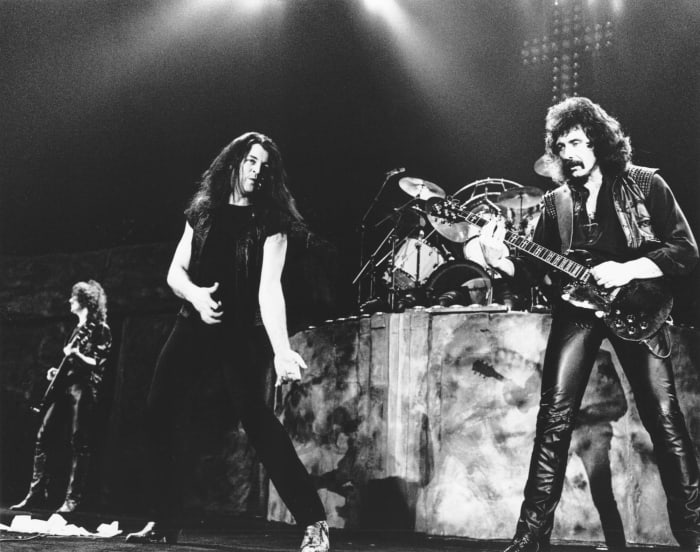
If you think about it, what makes "heavy metal" the go-to descriptor for "hard rock" music? In the world of science, "heavy metal" refers to a metal with a very specific high level of gravity, while the military often uses the term to define a larger weapon or type of shot. In pop culture, the phrase "heavy metal" was initially used by counterculture icon William S. Burroughs in a series of works from the early '60s. These references had nothing to do with music, but Burroughs' influence on the emerging beat generation made "metal" a casual reference to slower, louder songs. Iron Butterfly's 1968 debut record was called "Heavy", and it was around this time that "metal" began its use by critics to refer to the sounds of bands like the Rolling Stones and Electric Flag. Then when both Led Zeppelin and Black Sabbath showed up at the start of the '70s, "heavy metal" took on a whole new meaning, and the rest was speaker fuzz history.
riot grrrl
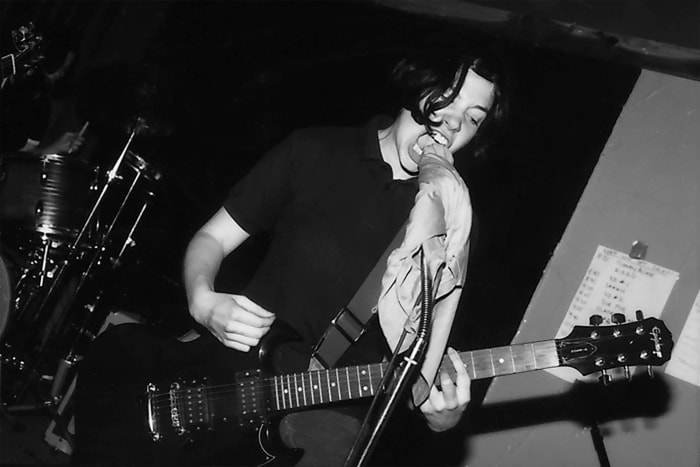
In the late '80s and early '90s, rock music -- and especially hard rock and punk -- was dominated by men. While artists like Lita Ford and Joan Jett found hair-metal success in the late '80s, they were more exceptions than the rule. Thus, as the grunge scene began to congeal in the Pacific Northwest, so too did an increasingly feminist movement to get girls behind guitars and in front of the mics. Zine culture was heavy at the time, and self-published works like "Interrobang?!", "Chainsaw", and "Jigsaw" found success in covering both punk rock and the dissemination of gender norms. Female-fronted acts like Bikini Kill and Bratmobile started picking up steam. Bratmobile's Jen Smith talked about wanting to make a "girl riot" in the scene, and the third issue of "Jigsaw" had a subtitle of being "angry grrrl zine." To remove the dismissive way men would refer to "girls" and change the name into more of a furious animal growl, it wasn't long before "riot grrrl" became a descriptor unto itself, defining a movement whose impact is still felt today.
Musique Concrète
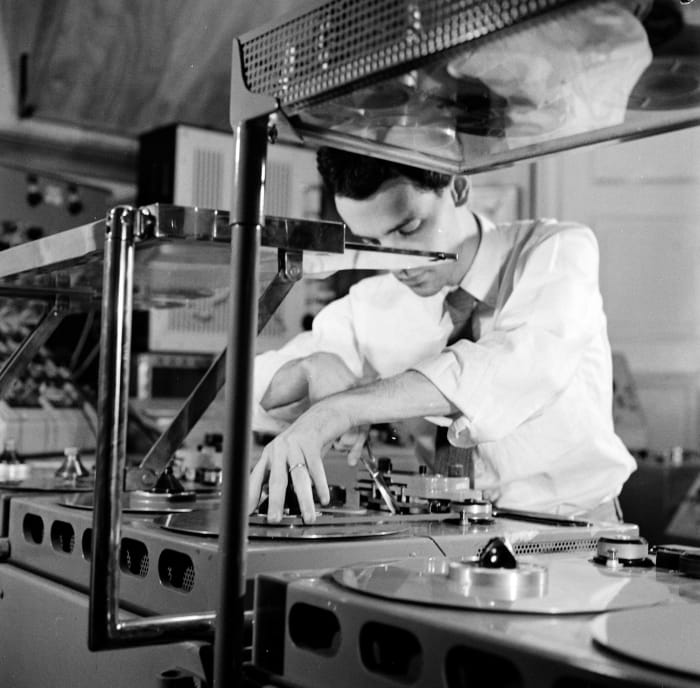
To our knowledge, there has yet to be a "musique concrète" album that has topped the charts, but that's largely by design. Records in this style often consisted of tape-recorded sounds that would later be distorted, manipulated, and arranged into new, engaging forms. The key figure in this movement is French composer Pierre Schaeffer, who became obsessed with figuring out new forms sound could take on, eventually forming the "Groupe de Recherche de Musique Concrète," a collective which through technical and compositional innovation would push sonic experimentation to its very limits. While the name means nothing more than the obvious "concrete music," it was Schaeffer and Egyptian tape manipulator Halim El-Dabh who challenged previously-held notions of songwriting and recording and forever altered the course of music as a result.
New Jack Swing
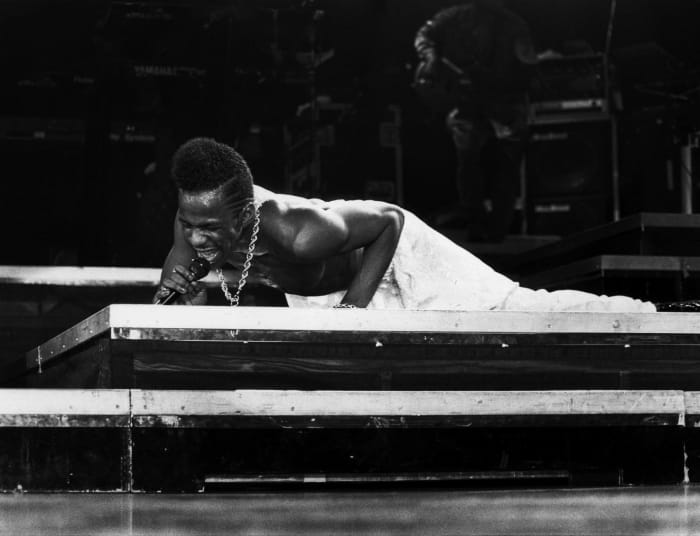
Sometimes referred to as "swingbeat," there was a time in the late '80s/early '90s when "new jack swing" was inescapable. Often associated with R&B and pop producers like Teddy Riley and Jam & Lewis, this sound was exemplified by its hard-hitting digital drum snares, often made with the Roland TR-808 to create that kind of "orchestra hit" sound that gave so many productions of the era a glossy, metallic sheen. Combing a few slang terms together in a "Village Voice" profile of Riley was the first time "new jack swing" was ever seen, while tracks like Janet Jackson's legendary "Control" and most of the peak-era output of Bobby Brown typified the sound. However, with its intense popularity came oversaturation, and now new jack swing is remembered as more of a production timestamp of an era than anything else. (Those early Janet records still go hard, though.)
Hardcore

Hardcore can mean different things to different genres, but whether you're talking about hardcore punk rock or hardcore dance music, the key feature is going to be "intensity." Interestingly, there is a definitive genesis of the term in the punk era, and that is due to the band D.O.A. naming their 1981 sophomore record "Hardcore '81", thus popularizing the term. It's since taken on a variety of other variations, but when you see something listed as being hardcore, you're likely in for a punishing experience for your ears.
IDM

The abbreviation for IDM is "intelligent dance music," which many DJs and otherwise-commercial electronic artists have long had an issue with ('cos what do they make: "Dumb" Dance Music?). Yet, in its early '90s iterations, this classification was used to define an increasingly cerebral, at times defiantly non-commercial brand of electronic music that was branching out of ambient music in the late '80s. Warp Records has long been home to outre electro pioneers, and the works of artists like Aphex Twin, The Orb, Autechre, and German glitch pioneer Oval have all fallen under the IDM classification. IDM took hold of more music-minded internet list servers back in the day, helping spawn the online fan revolution that would lead message boards and blogs to have immense sway over the internet discourse in the decades that followed.
Drill

Rap music has always had its share of flashy pop moments as well as turns towards the gritty and autobiographical, but "drill" was something else entirely different. Largely appearing in Chicago shortly before the 2010s hit, drill artists were unafraid to depict the violent and tragic things they had witnessed on the street, sparing few details. It was different from other genres like the fictitious violence of horrorcore because drill always had a more personal edge, lending the lyrics a dark sense of gravity with the beats often just as grimy to match. In terms of etymology, "drill" is slang for a retaliation, but its use varies, just as how "drill" as a genre is more defined by its themes than a particular sound. There are notable U.K. and Brooklyn variants of drill that exist, but artists like Chief Keef and producers like Lex Luger hold a large sway over a scene that only feels like it's recently been infiltrating mainstream rap.
Ska
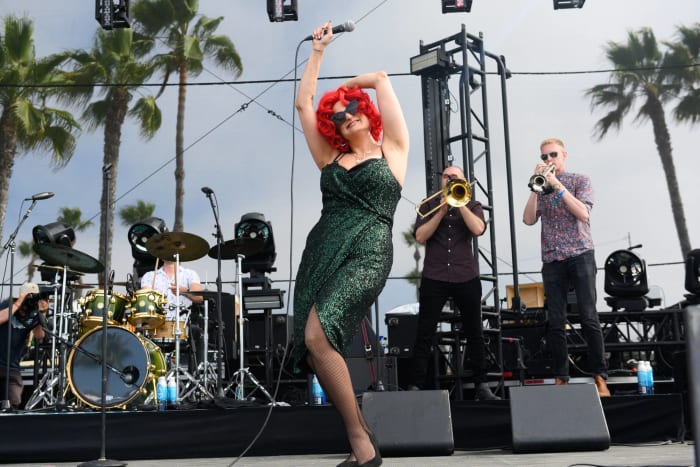
Ska music can be traced back to the late '50s in Jamaica, and since then, there have been multiple waves of it, the "third wave" of which brought acts like The Mighty Mighty Bosstones, Operation Ivy, and No Doubt to prominence in the U.S. Yet the actual term "ska" itself? No one really knows the origins, but most stories center around bassist Cluett Johnson. His band Clue J & His Blues Blasters were one of the first ska bands on the scene, and several members went on to join the still-running-to-this-day group The Skatalites. Many have said the genre got its name by Johnson telling another member to play his guitar in a "ska, ska, ska" manner, but others have disputed this. However it originated, it's likely intended to be onomatopoetic in some form or another -- and so long as we have those jazzy horn lines and a quick beat, we'll always have ska.
Dubstep
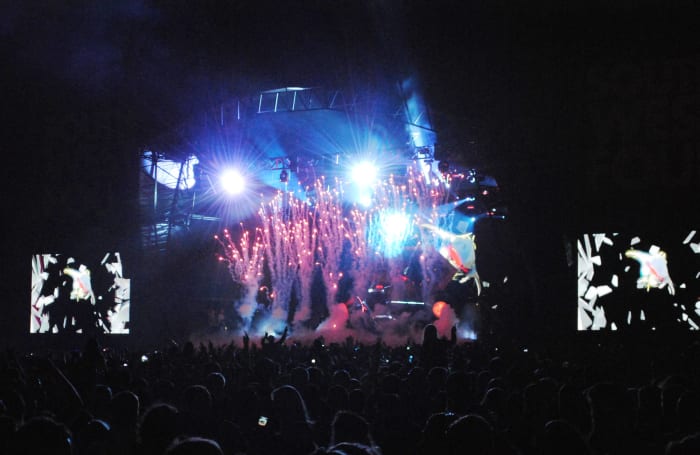
What's fascinating about dubstep is how its meaning has changed over a single decade. Initially appearing in the late 1990s/early 2000s, a "dub" remix of something often meant there was a syncopated, often reggae-indebted revision of the song, whether it be a melodic change or a representational revamp. Yet dub mixes gave way to "dubstep," a new kind of beat genre birthed out of the U.K. garage movement. Early dubstep albums by the likes of Burial garnered acclaim for their cold atmosphere and emotive breaks. Yet, the genre term shifted once again upon the rise of the somewhat derided "brostep" movement, of which artists like Skrillex ruled the roost with their explosive beat drops and other arena-EDM affectations.
Honky-Tonk
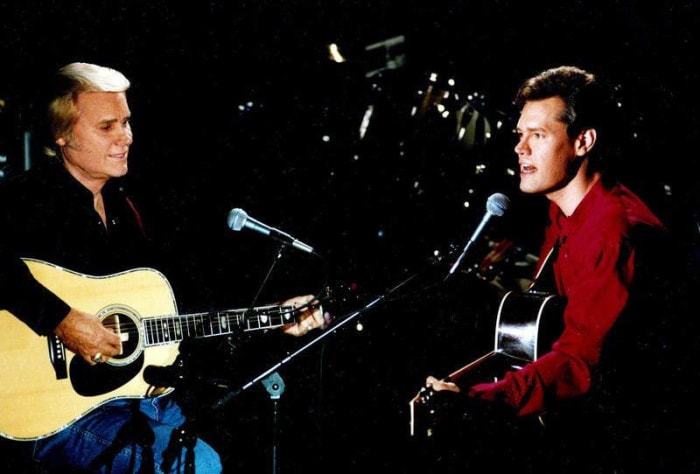
One dictionary describes the origin of "honky-tonk" as a "rhyming compound based on honk." It's an incredible way to depict a phrase that works as both a genre and a type of location. A honky-tonk can be in reference to a bar that specifically plays country music, while the genre itself is often considered the piano-based music you'd hear at an old saloon. Characterized by some as being "more interested in rhythm than melody," honky-tonk has been adapted into various contexts, ranging from piano-based boogie-woogie to a country songwriting style that was championed by Golden Age greats like George Jones and Hank Williams.
Hip-Hop
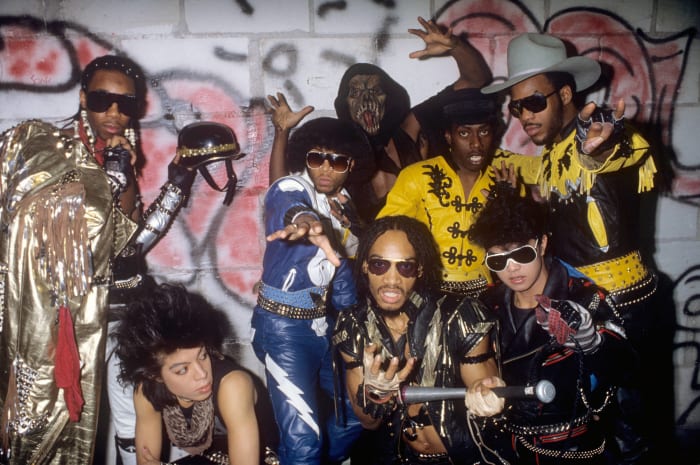
We could spend a whole list covering the symbiosis of every utterly distinct rap subgenre there is (like boom bap, crunk, grime, and trap), yet all of them tend to fall under the overseeing cultural marker that is "hip-hop." While some post-war terminology tended to refer as teenage house parties as "hippity-hops," many cite Grandmaster Flash and the Furious Five member Keef Cowboy (Keith Wiggins) with originating the term, using "hip" and "hop" in the way a military march sergeant shouts out "left-right-left." The phrase "hip-hop" was adopted quickly following the Furious Five's live shows, and the phrase was famously was used in the first verse of The Sugarhill Gang's landmark single "Rapper's Delight". Nowadays, hip-hop is less about a particular style of music and more about the entire culture (fashion, art, etc.) that has grown up around it.
Hyperpop
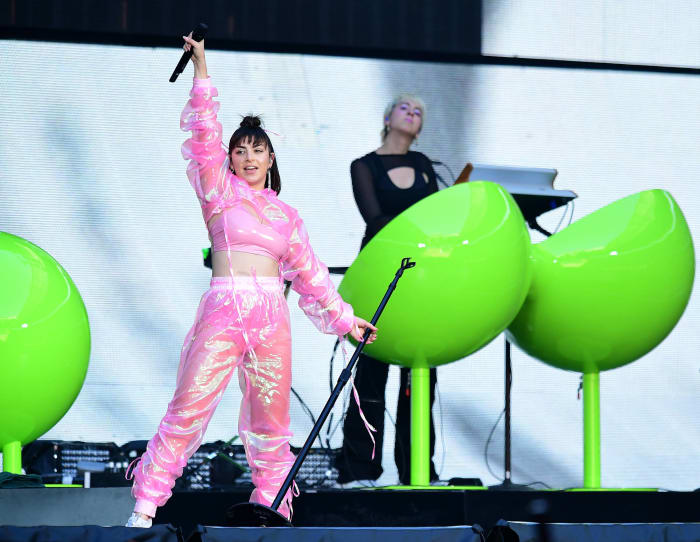
Arguably one of the newest entries on this list, "hyperpop" is used to define a boundary-pushing form of pop music that still emphasizes a catchy hook while also breaking every rule of music production. Much of this stems from the PC Music collective, led by producer A.G. Cook and soon spawned influential artists like Sophie and Charli XCX. Simultaneously reveling and mocking consumer culture, "hyperpop" artists can make music as blistering as it is blissed out, as a single 100 Gecs song can scratch at your ears with atonal speaker fuzz while also getting stuck in your head for weeks on end. Hyperpop artists and fans often (but not exclusively) identify as queer. It is pop music, but the "hyper" part transcends mere happy hardcore comparisons because it feels next-gen, futuristic, and more often than not "retro-futuristic." Despite only coming up within the last few years, it appears that hyperpop is very much here to stay.
Bossa Nova
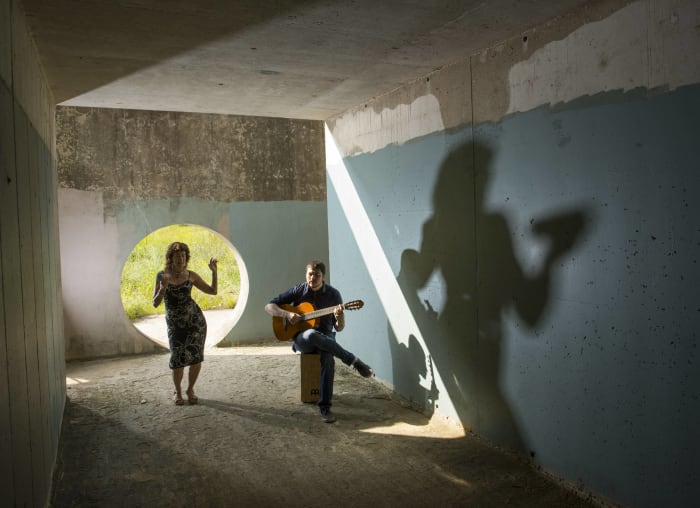
As prevalent bossa nova has been in the realm of samba, its genesis is fairly recent, having started in the late 1950s. The actual Portuguese translation of "bossa nova" can be seen as "new tendency" or "new trend," specifically in the sense of how this genre took the rhythmic elements of samba and recreated them via the classical guitar instead of more traditional percussion. The legendary guitarist João Gilberto and future "Girl from Ipanema" songwriter Antônio Carlos Jobim are often credited as the "fathers of bossa nova." Following the crossover success of Sergio Mendes & Brazil 66, several American jazz artists took to making their own bossa nova records in the '60s, giving the genre a global appreciation while also shining a light on this wonderful aspect of Brazilian culture.
New Age

Or, as some may jokingly refer to it, "Windham Hill music." While that specific record label was known for oversaturating the market in the '80s and '90s with blissful, almost comically obvious soundtracks to day spas and massage parlors, "new age" music is a very splinter of ambient music. While ambient music is often wholly instrumental and can relax or unnerve depending on the artistic aims of the piece, new age is designed very specifically to uplift and center, to calm and relax. Initially a fringe movement with no major commercial value, the shop-from-home catalogs and infomercials for CDs and cassettes in the '80s led to new age artists getting a foothold in the popular consciousness without the support of major labels (hence, then, the oversaturation of Windham Hill products). The closest way the genre got named was due to its association with the New Age spirituality movement of the 1970s, which swept across the West and provided alternative means of finding inner peace, with certain tapes and later CDs serving as the musical backing for the cause.
House

According to one not-so-informative '80s news anchor, "house music was first made in the creator's houses." While somewhat true, mass production of electronics in the '80s gave people more access to studio equipment without having to book studio time (even if said equipment was at times prohibitively expensive). Yet, the truth of house music's origins as it was known can be traced back to Chicago in the early-'80s. There, in Chicago's West Loop, DJ Frankie Knuckles got the now-closed Warehouse club moving and grooving by taking disco songs and resplicing them into longer and sometimes meatier forms. Championed by many gay Black men at the time, Knuckles and other like-minded DJs like Ron Hardy created a thumping sound unto itself, one that inspired whole new dance trends (like "footwork" and "jacking") and remains wholly influential to this day.
Zydeco
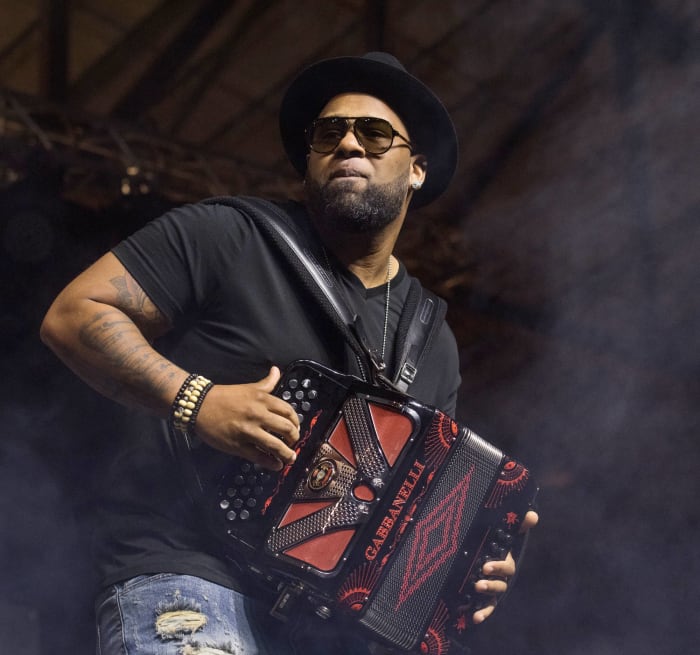
While there are many exciting and flavorful variants of Cajun music, you know full-well a zydeco song when you hear it. Typically a blues number with Creole and Native American influences, zydeco compositions are trademarked by the piano accordion, which is often center-stage in most compositions (washboard percussion is also prominent). The term "zydeco" doesn't have a specific set root, but many say it stems from the pronunciation of the French idiom "les haricots ne sont pas salés," which means "the snap beans aren't salty." This is an expression for the hardship that is almost at odds with the typically peppy melodies associated with zydeco, but as with everything zydeco-related, it doesn't have to make sense to sound good.
Punk

Well before punk music came to be defined by mohawk haircuts and loud guitars, the term "punk" had been in use for centuries, going back to Shakespeare (who used it in both "The Merry Wives of Windsor" and "Measure for Measure" to describe prostıtutes). After an early use by The Chicago Tribune to describe a band called The Fugs in 1970, the term was caught on by Creem, Rolling Stone, and other famed critics. While some '60s garage rock was referred to as "garage-punk" in retrospectives in the '70s, The Stooges and The New York Dolls were some of the first contemporary acts to receive the designation as "punk" bands. From then on, the name for such propulsive, anti-establishment rock took hold, and punk rock fans never looked back.
Ambient

Erik Satie, the composer behind some of the most beautiful melodies in the world in the form of the "Gymnopédies", once tried his hand at a new style of composition that he referred to as "furniture music." While lively and full of shifts and melodies, he still designed it as music to be played in the background and not fully paid attention to. The French name for "furniture music"? "Musique d'ameublement." In the many decades that followed, various forms of structureless or mood-based music and compositions aimed to change one's mood in forms other than songs as we traditionally know them. Yet Brian Eno's 1975 record "Discreet Music" was considered a breakthrough in terms of defining what the modern genre of ambient music was, and ultimately was something he later cemented by calling his 1978 experimental record "Ambient 1: Music for Airports", forever etching the genre name into the public consciousness.
The Blues

The common conception is that "the blues" is such named because the lyrics in the songs depict a certain sadness or longing. Poet and activist Charlotte Forten once wrote that these types of songs "can't be sung without a full heart and a troubled spirit;" a mindset which blues musicians have carried with them for over a century. Some say the term of having "the blues" itself comes from a 1600s expression of having "the blue devils," which was thought of as what one sees when in a severely inebriated (and sometimes melancholic) state. As songs developed in the late 1800s and started to get recorded in the early 1900s, "blues" music came to encompass everything from Black spirituals to work songs to ballads, sometimes humorous but often imbued with pain and hardship. Of course, as it grew and changed and popularized, the blues would later serve as the foundation for everything from jazz to rock & roll.
Evan Sawdey is the Interviews Editor at PopMatters and is the host of The Chartographers, a music-ranking podcast for pop music nerds. He lives in Chicago with his wonderful husband and can be found on Twitter at @SawdEye
More must-reads:
- 20 superstar actors who rejected the role that made them famous
- 25 celebrity names no one pronounces correctly
- The 25 greatest opening song lines of all-time
- 18 notable bands who are still touring without any original members
- 20 iconic musicians who refuse to play some of their biggest hits
Breaking News
Trending in Entertainment
Customize Your Newsletter
 +
+
Get the latest news and rumors, customized to your favorite sports and teams. Emailed daily. Always free!
PRIVACY POLICY EDITORIAL POLICY CONTACT US
ABOUT YARDBARKER TERMS OF SERVICE
Use of this website (including any and all parts and
components) constitutes your acceptance of these
Terms of Service and Privacy Policy.
This site is for entertainment purposes only.
There is no gambling offered on this site.
Gambling Problem? Call 1-800-Gambler.
